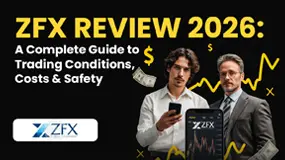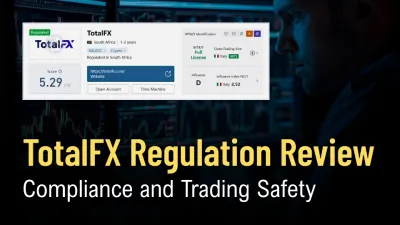Abstract:A currency pair is a quote for two currencies that are not the same. It's the amount you'd pay for a unit of another currency in one currency. For example, if you get quoted EUR/USD 1.13, it means you can exchange 1 Euro for 1.13 US Dollars.

A currency pair is a quote for two currencies that are not the same. It's the amount you'd pay for a unit of another currency in one currency. For example, if you get quoted EUR/USD 1.13, it means you can exchange 1 Euro for 1.13 US Dollars.
When the value of one currency changes, the value of another currency changes as well. Suppose the EUR/USD quotation rises from 1.13 to 1.15 tomorrow. In that case, it indicates that the Euro has appreciated against the US dollar, or that the US dollar has depreciated against the Euro, since buying 1 Euro will cost more US dollars.
The Different Types of Forex Pairs
Forex pairs are usually divided into three groups. The majors, commodity currencies, and cross currencies are as follows:
• Major currencies: These are traded the most on the markets. Although opinions range on the number of major currency pairs, most lists include EUR/USD, USD/JPY, GBP/USD, and USD/CHF.
• Commodity currencies: Currency pairs whose value directly gets linked to a commodity like coal, oil, or iron ore. The commodity currencies AUD/USD and USD/CAD are covered in this list.
• Cross currencies: Currency pairs that do not include the US dollar, such as EUR/GBP and EUR/JPY.
The US dollar, Euro, Japanese yen, British pound, and Swiss franc, which make up the major pairs, are among the top seven most traded currencies as of 2021.

The EUR/USD is the most widely traded currency pair globally, accounting for more than 20% of all forex transactions.
The USD/JPY is in a distant second place, followed by the GBP/USD and the USD/CHF, which has a minor market share.
1. EUR/USD
The most popular currency pair on the market is EUR/USD, due to the pair representing the world's two largest economies, namely the European Union and the United States. Because of the high daily volume of EUR/USD transactions, the pair has a lot of liquidity, resulting in tight spreads.
The interest rates that are set by the US Federal Reserve (Fed) and the European Central Bank (ECB) are among the factors that influence the EUR/USD exchange rate. Higher interest rates attract more buyers because they provide a better return on their original investment. If the ECB, for example, had established higher interest rates than the Fed, the Euro would most likely appreciate against the dollar.
2. USD/JPY
The USD/JPY currency pair, sometimes known as the gopher,' comprises the US dollar and the Japanese yen. It is the market's second-most-traded FX pair. The yen is known for its high liquidity because it's Asia's most actively traded currency, and the US dollar is the world's most commonly traded currency.
The Bank of Japan (BoJ) sets interest rates for the Japanese economy, impacting the yen's value against the dollar.
3. GBP/USD
In this currency pair are the pound sterling and the US dollar. The GBP/USD became the cable' currency because of the deep-sea cables used to transport the bid and ask quotes between London and New York.
The interest rates that the Bank of England (BoE) and the Federal Reserve sets impact the GBP/USD quote price. The resulting interest rate differential between the pound and the dollar can significantly impact the price of the GBP/USD currency pair.
4. AUD/USD
The Australian dollar against the US dollar is represented by the AUD/USD symbol, also known as the Aussie.' The value of the Australian dollar is linked to the value of the country's exports, with metal and mineral exports such as iron ore and coal accounting for a significant amount of the country's GDP.
The interest rate disparity between the Reserve Bank of Australia (RBA) and the US Federal Reserve influences the AUD/USD exchange rate.
5. USD/CAD
Because of the loon bird that appears on Canadian dollar coins, the USD/CAD is known as the loonie,' reflecting the pairing of the US dollar with the Canadian dollar. Because oil is Canada's primary export, the strength of the Canadian dollar is directly related to the price of oil.
Canada can generate a substantial supply of US dollars from oil exports because oil is priced in US dollars on global markets. As a result, if the oil price rises, the Canadian dollar will most certainly strengthen against the US dollar.
As a result, when trading USD/CAD, you should keep an eye on the price of both Brent and US crude, as any changes in the oil market would more than likely affect the exchange rate of this currency pair.
6. USD/CNY
The USD/CNY currency pair combines the US dollar with the Chinese renminbi and usually gets referred to as the yuan.
Since the trade war between the United States and China, the yuan has steadily lost ground against the dollar. This is somewhat due to the Chinese government's decision to allow the yuan to decline in the hopes of lowering the cost of exports and expanding the country's already considerable market share in countries apart from the United States.
Only when the yuan is exchanged in the onshore Chinese market is it referred to as CNY. CNH has historically been less tightly regulated by the Chinese government than CNY, making it more volatile. Because of its volatility, it may be a better option for speculative trading.
You should maintain a focus on the trade war between the United States and China, as any developments are likely to impact this pair's price.
7. USD/CHF
The USD/CHF currency pair, also known as the Swissie,' comprises the US dollar and the Swiss franc. Because the Swiss financial system has historically been a place of safety for investors and their money, USD/CHF is a popular currency pair.
As a result, traders usually resort to CHF during periods of increased market volatility, whereas traders are less interested in the Swiss franc during periods of greater market stability.
8. USD/HKD
The Hong Kong dollar is exchanged for the US dollar in USD/HKD.
In a unique arrangement known as a linked exchange rate, the value of the Hong Kong dollar is tethered to the US dollar. Traders can profit from price swings inside a zone of HK$7.75 to HK$7.85 to US$1, in which the Hong Kong dollar is allowed to fluctuate.
9. EUR/GBP
The EUR/GBP pair, which includes the Euro and the British pound, is widely regarded as one of the most difficult to predict accurately. This is due to the EUR and GBP having a long history linked to the UK's closeness to Europe and the resulting strong trade links between the two economies.
Traders should stay updated on any ECB and BoE developments that could affect the Euro and pound exchange rates, further increasing volatility.
This currency pair's price has swung wildly in recent years, owing primarily to Brexit's uncertainty. Although the high level of volatility may entice traders, it is critical to have a risk management strategy before entering a volatile market.
10. USD/KRW
The US dollar is paired with the South Korean won in USD/KRW. As of November 2019, the South Korean economy had risen to become the fourth largest in Asia and the eleventh largest globally since the turn of the century. This could explain the surge in USD/KRW activity, as traders want exposure to markets other than Japan, China, and Hong Kong.











